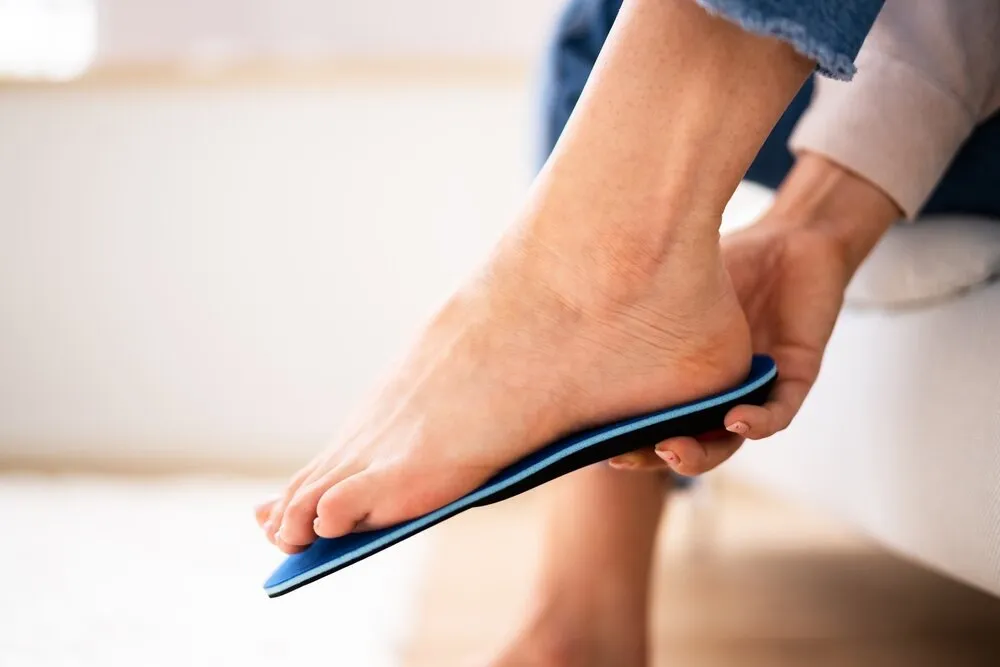Introduction
Flat feet, medically known as pes planus, is a common condition where the arches of the feet are flattened, allowing the entire sole of the foot to touch the floor when standing. While many people with flat feet don’t experience any discomfort or issues, some may suffer from foot pain, fatigue, or other related problems. One effective way to manage these symptoms is by using arch supports designed specifically for flat feet. In this blog post, we’ll delve into why arch support is crucial for flat feet and provide tips on choosing the right support for you.
Why Arch Support is Important for Flat Feet
Pain Relief: Flat feet can lead to strain and discomfort in the feet, ankles, knees, and even the lower back. Arch supports help distribute the weight more evenly across the foot, reducing pressure on the affected areas and alleviating pain.
Improved Foot Function: Arch supports can help correct overpronation (rolling inward of the foot) commonly associated with flat feet. By providing proper support, they promote better foot alignment and function.
Prevention of Further Issues: Over time, untreated flat feet can contribute to other foot problems like plantar fasciitis, bunions, and hammertoes. Arch supports can help prevent these issues by providing the necessary support and alignment.
Choosing the Right Arch Support
When it comes to selecting arch support for flat feet, there are a few key factors to consider:
Type of Arch Support:
Insoles: These are removable inserts that can be placed inside your shoes. Look for insoles with a contoured arch support to provide adequate support for flat feet.
Orthotic Inserts: Custom-made orthotic inserts can be tailored to your foot shape and provide targeted support where you need it most.
Shoe Selection: Some shoes come with built-in arch support, so choosing the right footwear is also essential.
Material:
Memory Foam: Offers cushioning and molds to the shape of your foot for personalized comfort.
Gel: Provides excellent shock absorption and is ideal for those who are on their feet for extended periods.
Rigid Support: Made from hard materials like plastic or carbon fiber, these provide firm support and are often recommended for severe flat feet.
Fit and Comfort:
- Ensure the arch support fits comfortably inside your shoes without causing any pressure points or discomfort.
- Consider trying different types and brands to find the one that feels best for you.
Consult a Specialist:
- If you’re unsure about which arch support to choose or if you have severe flat feet, it’s advisable to consult a podiatrist or orthopedic specialist. They can provide personalized recommendations and may suggest custom orthotics for optimal support.
Tips for Using Arch Support Effectively
Gradual Introduction: Start wearing your new arch supports for a few hours each day and gradually increase the time as your feet adjust.
Regular Maintenance: Clean and inspect your arch supports regularly to ensure they remain effective and free from wear and tear.
Replace When Needed: Over time, arch supports can lose their effectiveness. Replace them when you notice signs of wear or if you start experiencing discomfort again.
Conclusion
Arch support plays a vital role in managing the symptoms associated with flat feet, providing pain relief, improving foot function, and preventing further complications. By choosing the right type of arch support and following these tips, you can effectively manage flat feet and enjoy improved foot health and comfort.
If you’re experiencing persistent foot pain or discomfort, consult a healthcare professional for a comprehensive evaluation and personalized treatment plan tailored to your needs. Remember, taking care of your feet is crucial for overall well-being and mobility.

